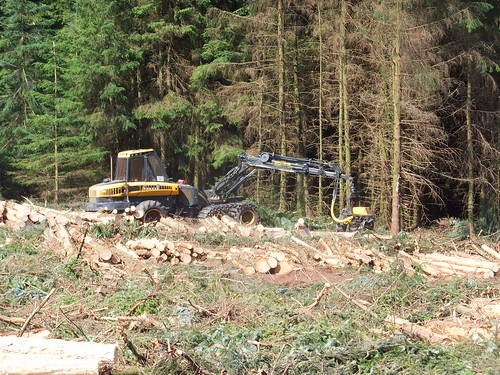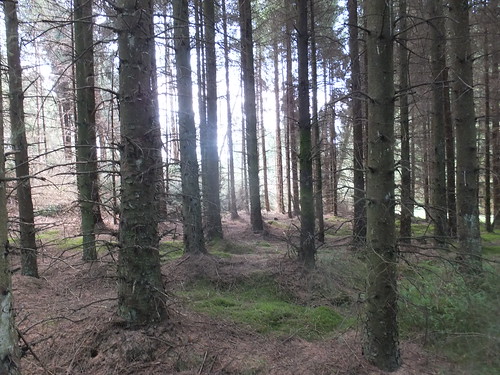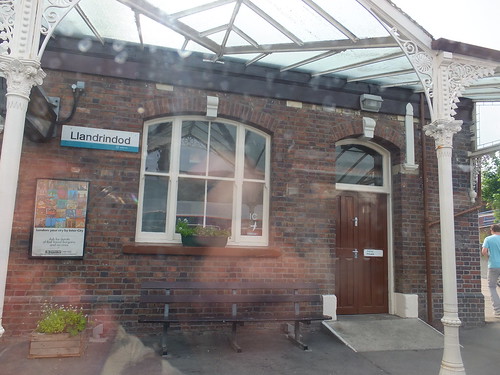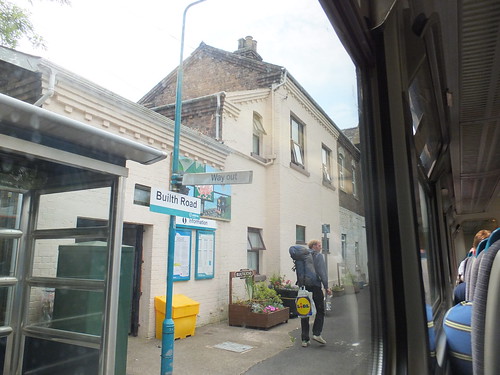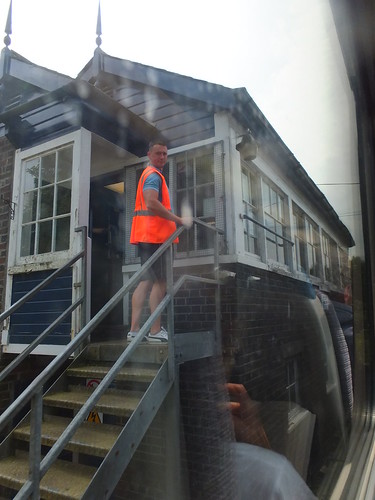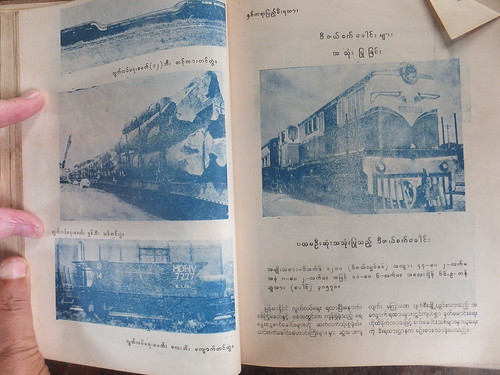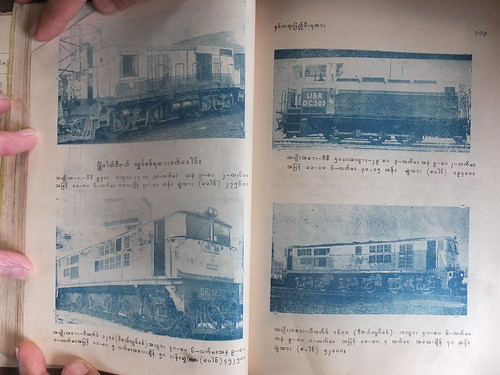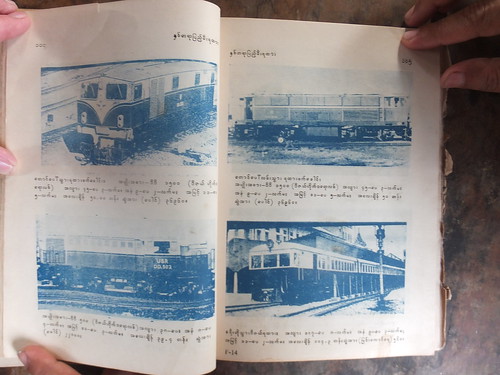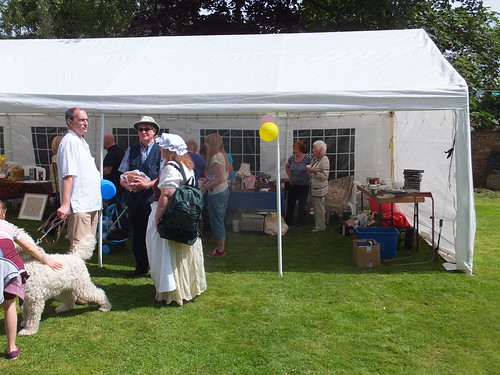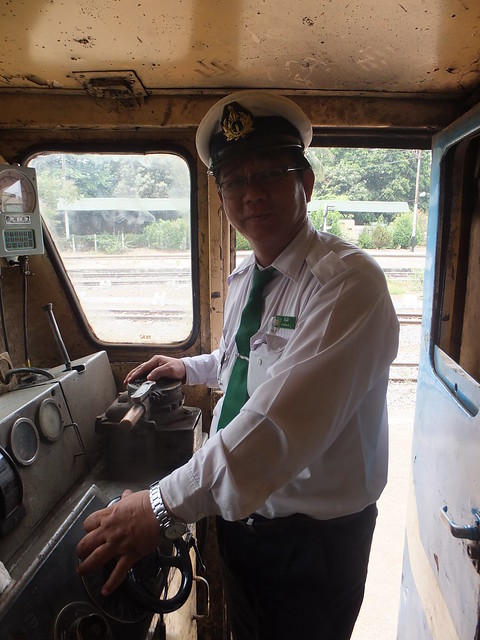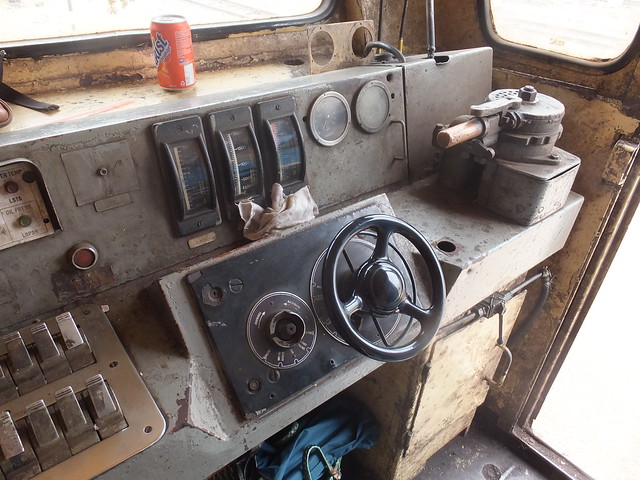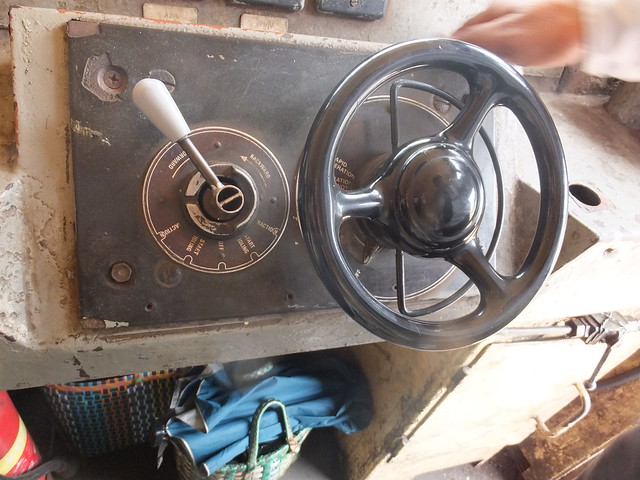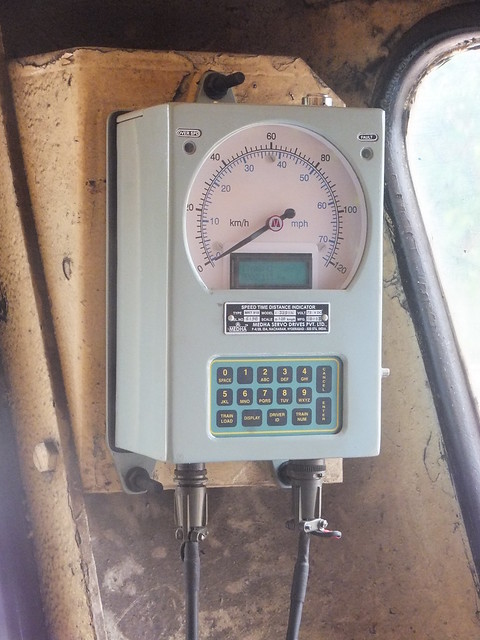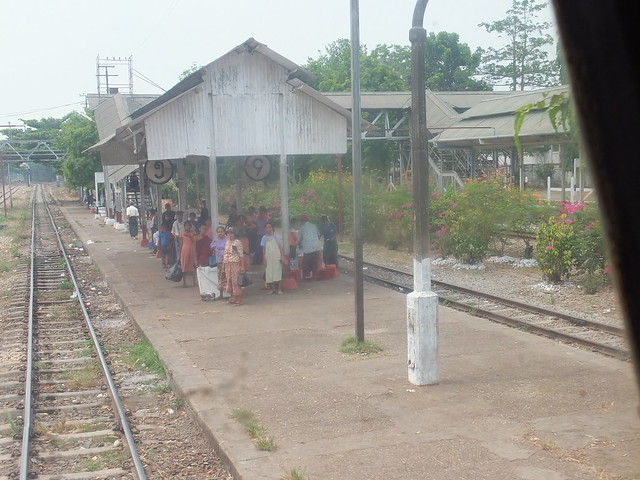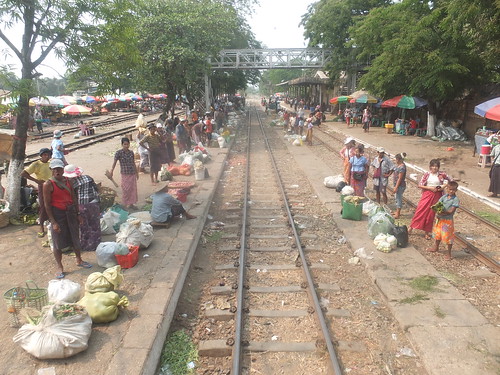Events of Saturday, 12th July 2014
I was booked steam driver at Peak Rail, with Dave as Fireman. It was an early start because we had a two-hour Driving Experience using 'Lord Phil' before starting the Service Trains. I've described the format of Driving Experience courses a number of times. Our Trainee Driver, like many candidates, was (belatedly) celebrating a 'Significant Birthday'. He was an apt pupil and everything seemed to thrill him. Watching how much people enjoy these courses reminds the crew just what a privilege is it to work on a steam locomotive. At 10:45, we said 'Goodbye' to our new friend and his waiting family and travelled Light Engine to Rowsley where our Guard called us onto the south end of the usual 7-coach train. Peter and Roy attached the Class 14 diesel locomotive at the north end and we were ready to set off at 11:15 on the first of five round trips to Matlock Town. The sun was shining brightly and we were clearly in for a very warm day. I think the forecast was for temperatures up to 30 degrees Celsius. It certainly seemed warm to me on the trip I fired so that Dave could have a drive. We completed the diagram without incident but, with the hot weather, I found it an exhausting day.
 'Lord Phil' being prepared for traffic earlier in the year.
'Lord Phil' being prepared for traffic earlier in the year.
Events of Tuesday, 15th July 2014
At the Battlefield Line, a diesel railcar service operates on Tuesdays, Wednesdays and Thursdays in summer. I was the railcar driver on 15th July. I arrived to find the 5-coach main train standing in platform 1. This is now all in maroon, but not all the vehicles are lined-out as yet. I walked up the line expecting to find the diesel railcar in the Railcar Siding but it soon became clear it wasn't there. Looking back towards the station, I could now see that the 'Bubble Car' was waiting for me in platform 2 but I hadn't spotted it as I walked along platform 1 because of the stock for the main train masking it.
Preparation for a diesel railcar is a much briefer task than on steam, but it's important it's done properly. In the cab I found a note saying that if the single-car became overloaded with passengers or I suffered an engine failure (both events fairly unlikely), one coach of the 2-car DMU was serviceable and could be attached to the 'Bubble Car'. The other 'half' of the 2-car set was in the shed, receiving 'TLC' from the owner, Richie Marcus.
We operated four round trips, starting from Shackerstone at 11:00, 12:30, 14:00 and 15:30. There were no problems and we carried a reasonable number of passengers. All-in-all a pleasant and not too strenuous day.
 An earlier picture of the single-unit DMU at Shackerstone.
An earlier picture of the single-unit DMU at Shackerstone.
Events of Saturday, 19th July 2014
On the afternoon of Friday, 18th July, I received a text asking if I was available as the steam driver at the Battlefield Line the following day. Following my maxim of 'Embrace the Unexpected', I replied 'OK'. On the day, almost everything went wrong but, despite (or because?) of this, I had a great day.
I expected to find the passenger stock still in platform 1, as it had been the previous Tuesday. In fact, it had been moved across to platform 2 and had "grown" - a 'blood and custard' liveried coach had been added at the north end, making a six coach load. As I walked towards the Signing-on Point, I looked across from platform 1 to see if the extra coach appeared to have been 'hooked-on' correctly. From the platform, all looked well. Having signed on, I checked the details of the day in the Monthly Operating Notice. A standard steam service of five round trips to Shenton was called for, with departures from Shackerstone at 11:15, 12:30, 13:45, 15:00 and 16:15. In the shed, Dave was preparing the Great Western 2-8-0. Together, we got her lit-up and oiled-round. We had plenty of time before our first departure, although I was concerned that Dave was suffering from some sort of infection. He said he'd work the first trip and then see how he felt.
By the time we'd hooked-on to the train (with a full tender of water but not too much coal), we'd a little more information about the day. It appeared that 150 Morris Dancers were booked to travel back from Shenton on the second or third train, enjoying a sandwich lunch on the way. The whole party would return to Shenton by train later. The railway were providing the food and we were told that the first departure would be delayed waiting for the catering supplies to arrive. When we came to create vacuum, we discovered that we could only create 10 inches of mercury (compared with 25 inches of mercury which the Great Western used). I climbed down to the track and walked back along the train looking for problems. Although I hadn't been able to see when I'd earlier looked across from platform 1, from my new vantage point I could see that, although the coupling and gangway connections had been correctly made when adding the sixth coach, the flexible vacuum hoses had not been connected-up. Adrian quickly 'bagged it up' and, on returning to the engine, all was well.

Driver's view while awaiting 'the road' at Shackerstone.
We finally received the 'Right Away' from the Guard and we set off for Shenton on our first trip, rather late, whilst the train catering staff prepared and laid out the lunches. At Shenton, we found the Morris Dancers arriving by car. We completed our run-round at Shenton and, still late of course, returned to Shackerstone where, once again, we ran round. Although he'd bravely carried out the fireman's duties on the first trip, Dave decided that it wasn't wise to carry on. Fortunately, Jason came to the rescue. He'd been expecting to spend the day painting the Class 73 in the shed but agreed to deputise for Dave for the rest of the shift. By the time we arrived at Shenton on the second trip, the Morris Dancers were on the platform, dancing. Eventually, the dancers finished their performance and joined the train where their lunches had been laid out ready and we returned to Shackerstone.
By now, we were later than ever, so we were not surprised to be informed on arrival back at Shackerstone that our third trip had been cancelled and that our next working would be the three o'clock departure. We detached the locomotive and moved across to platform 1, where we intended to park for a while so that people could admire '3803'. All the Morris Dancers were on platform 1 and soon the various 'sides' or teams were performing. It was a very jolly time.
The station footbridge at Shackerstone, which also forms part of a public footpath, is currently closed and the local authority seem to be taking their time commencing repairs. This means that the barrow crossing at the north end of the station is the only route for passengers between the two platforms. We'd carefully stopped with the 'blood and custard' liveried coach at the north end of our train clear of the crossing. This meant that the vehicle at the south end of the set (a 'BG' bogie Guards/Luggage Van) was hanging out of the platform. Then we discovered that a wheelchair-bound member of the Morris Dancers, with his companions, was 'marooned' in the 'BG'. Jason and I readily agreed to complete our run round and, with Adrian supervising, propel the train northwards until the 'BG' was in the platform, allowing the wheelchair ramp to be put in place and the wheelchair off-loaded. For extra safety, Adrian clipped the turnout at the north end where platform 2 line converges with platform 1 line. Having off-loaded our wheelchair passenger, we had to draw forward again so that the wheel chair could be taken over the barrow crossing to join the fun on platform 1.
 Painted faces, tattered jackets and sticks - the Border Morris tradition.
Painted faces, tattered jackets and sticks - the Border Morris tradition.
Of course, as departure time approached, we had to repeat the procedure - bring the wheelchair back to platform 2, set back the train to allow the wheelchair passenger back into the 'BG', then draw forward again to finish boarding all the remaining passengers. Our trip back to Shenton with the Morris Dancers was uneventful and our new dancing friends seemed very happy. It was only then that I discovered more about the event - a celebration for Anstey Royale Chalfont's 30th birthday with eleven 'sides' or teams performing. They had arranged one more display that day - at the Dog and Hedgehog Public House, Dadlington.
The weather had been warm and sunny until we started on our return to Shackerstone when the wind started to blow and the sky became very dark. Jason prepared the storm sheet which can be rigged from the rear edge of the cab roof to the tender, providing better protection than the standard cab.
 View from the footplate looking towards the tender with the storm sheet deployed.
View from the footplate looking towards the tender with the storm sheet deployed.
Back at Shackerstone, we ran round our train and, as we waiting for departure, the thunderstorm hit. I've seen some violent storms over the years but this was possibly the worst I've experienced. In addition to the usual startling thunderclaps some of the thunder sounded rather strange - long drawn-out noise conjuring up the image of sheet metal being ripped. This was accompanied by very heavy rain. The rain came downwards, then the rain came horizontally, then as the wind changed again the rain corkscrewed. We had the Guard's 'Right Away' so we set off. Visibility ahead was very poor, the rain appeared almost like fog. We picked up the Train Staff and carried on but we were very close to the Starting Signal before I could confirm that it was 'off'. A short lull in the wind revealed the front of the engine for a moment to show a large branch sticking out sideways from the buffer beam. I slowed to a stop and told Jason about the branch. "I've got one my side, too", he reported. He managed to wrestle both branches clear and we set off again. To have any sort of view forwards, I had to have the spectacle glass open, which meant that rain sluiced into the cab and into my face. Although the storm sheet was a massive improvement, both Jason and I were becoming a little bedraggled but there was not a word of complaint from Jason. I was reminded of one of my sayings: "Anyone can work on the footplate in good weather. It takes an engineman to do it in bad weather."
By the time we made our stop at Market Bosworth, the thunder appeared to have passed and the wind had subsided a little. It was still raining fairly hard, though. "We'll have to look out for fallen trees going up the cutting to Shenton", I said as we left Market Bosworth. We passed under one bridge with the line curving left and there was a tree, sitting in the middle of the track. I shut the regulator and gently braked. We were still on the uphill section so it didn't take to much braking to stop just clear of the substantial fallen tree, which must have reached at least halfway up the smokebox. The Guard joined Jason and I and between the three of us we removed the obstruction in two pieces (it must have been fairly rotten) and dragged it clear of the line.
The storm appeared to have blown itself out. By the time we ran round at Shenton, worked back to Shackerstone and shunted light engine to stand just outside the shed at Shackerstone, the weather wasn't bad. The signalman at Shackerstone had told us he'd had a complete power failure for a while but power had been restored. Jason discovered that the shed was still without power so the electric roller shutter door to the shed couldn't be raised. We examined the manual operating chain but found that it was disengaged. A little later, power to the shed was restored and the door could be raised. At that point, I signed-off. Thanks to Dave and Jason for a memorable day.
Events of Sunday, 20th July 2014
I was booked as steam driver at Peak Rail again, with Mike as Fireman. I was quite relieved that we didn't have a Driving Experience Course on the day, as the previous day at the Battlefield Line had proved quite demanding. Mike had got 'Lord Phil' "brewing up" nicely and the locomotive was sparkling, thanks to Mike's earlier efforts. It takes an awful lot of effort to keep even a small locomotive looking smart.
After the excitement of the previous day, I was quite content that we had a 'standard' day performing five round trips to Matlock Town with 'Penyghent'. We made a bit of an effort on our last run to Matlock as we connect with an East Midlands Train service. We were on time - the East Midland Trains service was a few minutes late arriving. The train stopped with the rear cab adjacent to the cab of 'Lord Phil', so we exchanged a few words with the friendly guard before he changed ends.
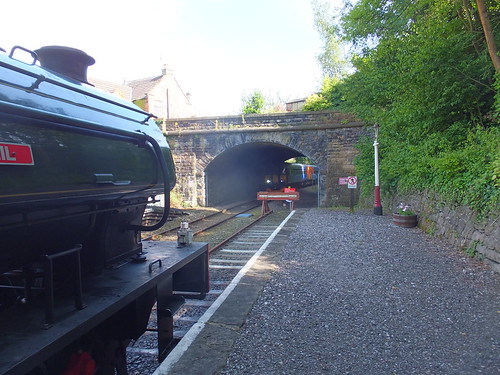 'Lord Phil' on arrival at Matlock Town, as an East Midland Trains Class 156 arrives from Nottingham.
'Lord Phil' on arrival at Matlock Town, as an East Midland Trains Class 156 arrives from Nottingham.
When the driver arrived at the cab, ready for going back, there was a short dialogue about the differences between the methods of working between Network Rail and Peak Rail:-
"We've no AWS ..."
"And no TPWS ..."
"No Vigilance ..."
"And no National Radio Network!"
Despite the differences, it's interesting that the safety of working on single lines still largely relies upon the principle of a unique train staff or token carried by the driver. Our own Token had been handed to the crew of 'Penyghent' ready for our return journey to Rowsley. The driver of the Class 156 carefully laid his Token, authorising his return to Ambergate, on his control desk.
 The Driver of the Class 156 checks his control panel ready for the return journey.
The Driver of the Class 156 checks his control panel ready for the return journey.With a wave and a short blast on the horn, the Class 156 set off and we saluted with a 'pop' on our whistle. The Guard was riding in the back cab and, as he passed us, he waved and gave us a 'toot' on the horn which, of course, we acknowledged. Soon, we made our final return to Rowsley where we detached from the train and shunted across to the pit to complete our disposal, bringing to a close my busy eight days.
My Pictures
Peak Rail, May 2014.
Anstey Royale Chalfont at the Battlefield Line.
